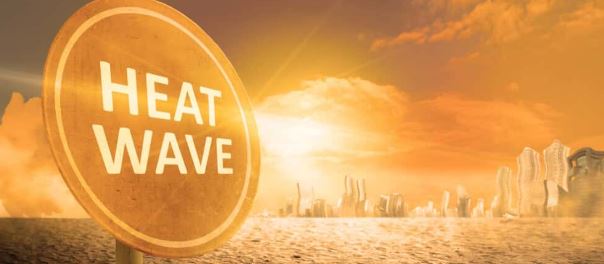Why the Ongoing Midwest, Northeast Heat Wave is Particularly Dangerous

The current heat wave sweeping across the Midwest and Northeast is raising alarms due to its intensity and potential health risks. This heat wave is characterized by prolonged high temperatures and high humidity levels, making it one of the most severe weather events of the season. Here’s why it’s particularly dangerous:
Prolonged High Temperatures
One of the most significant dangers of this heat wave is its duration. Extended periods of high temperatures can lead to a buildup of heat in buildings and urban areas, known as the “urban heat island” effect. This prolonged exposure can be particularly harmful, as it offers little respite for those affected.
High Humidity Levels
The combination of high temperatures and elevated humidity levels exacerbates the situation. High humidity impairs the body’s ability to cool itself through sweating, increasing the risk of heat-related illnesses. The “feels like” temperature, which combines temperature and humidity to reflect perceived heat, is often much higher than the actual air temperature during these conditions.
Increased Risk of Heat-Related Illnesses
Heat waves significantly increase the risk of heat-related illnesses such as heat exhaustion and heat stroke. Symptoms of heat exhaustion include heavy sweating, weakness, dizziness, and nausea. If untreated, it can progress to heat stroke, a life-threatening condition characterized by a high body temperature, confusion, and loss of consciousness. Vulnerable populations, including the elderly, young children, and those with preexisting health conditions, are at higher risk.
Strain on Infrastructure
Prolonged high temperatures can put a significant strain on infrastructure, particularly the power grid. Increased use of air conditioning leads to higher energy consumption, which can result in power outages. These outages can leave many people without the means to cool their homes, compounding the health risks.
Limited Access to Cooling Centers
While many cities offer cooling centers to help residents cope with extreme heat, access can be limited due to transportation issues or awareness. During the COVID-19 pandemic, social distancing measures also reduced the capacity of these centers, making it harder for people to find relief.
Agricultural and Environmental Impact
The heat wave is also taking a toll on agriculture, with crops suffering from the lack of adequate water and high temperatures. This can lead to reduced yields and increased prices for food products. Additionally, prolonged heat and dry conditions heighten the risk of wildfires, which can cause widespread damage and displacement.
Public Health Warnings
Authorities are urging residents to take precautions, such as staying hydrated, avoiding strenuous outdoor activities during peak heat hours, and checking on vulnerable neighbors and family members. Public health officials emphasize the importance of recognizing the signs of heat-related illnesses and seeking immediate medical attention if symptoms occur.
The ongoing heat wave in the Midwest and Northeast is a stark reminder of the dangers posed by extreme weather events. As climate patterns continue to change, the frequency and severity of such heat waves are likely to increase, underscoring the need for comprehensive strategies to mitigate their impact on public health and infrastructure.





